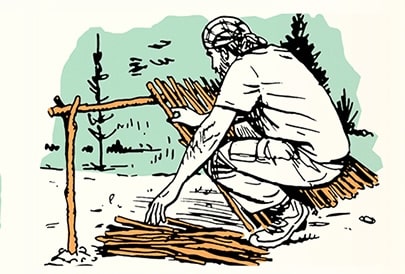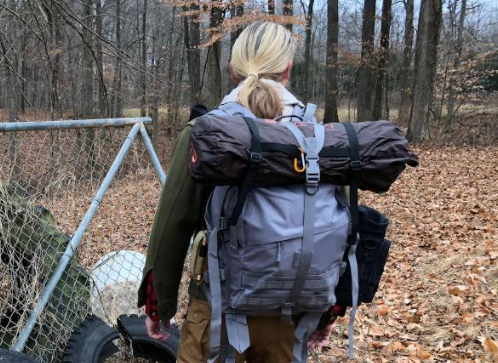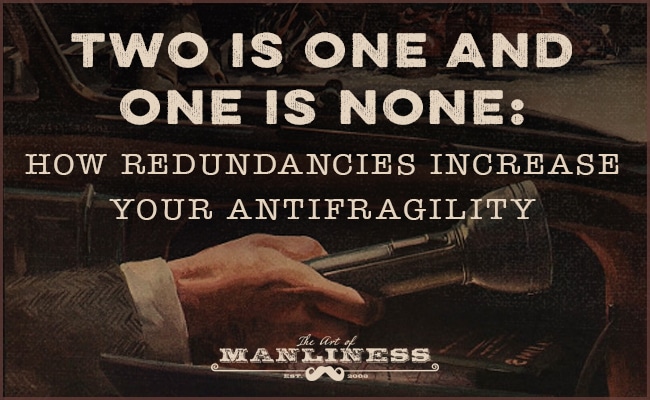
“Witness Mr. Henry Bemis, a charter member in the fraternity of dreamers. A bookish little man whose passion is the printed page, but who is conspired against by a bank president and a wife and a world full of tongue-cluckers and the unrelenting hands of a clock. But in just a moment, Mr. Bemis will enter a world without bank presidents or wives or clocks or anything else. He’ll have a world all to himself…without anyone.”
So opens the most classic episode of that most classic television series, The Twilight Zone. In “Time Enough at Last,” we drop in on the story of one Henry Bemis, an avid bookworm who is stymied at every turn in his desire to read. At home, his wife snatches away and hides his newspaper and magazines. In his job as a bank teller, he tries to sneak in a few pages of reading as he services customers – earning him a reprimand from his supervisor. It seems he will never have enough time to indulge his passion for the written word.
His one respite comes on his lunch hour, when he retreats to the bank’s underground vault where he can finally read in peace. One day, as he is enjoying this rare bit of solitude, the vault is rocked by a tremendous explosion. When Bemis emerges from the wreckage of the bank, he finds that the world has been destroyed by an atomic bomb. He alone has been spared.
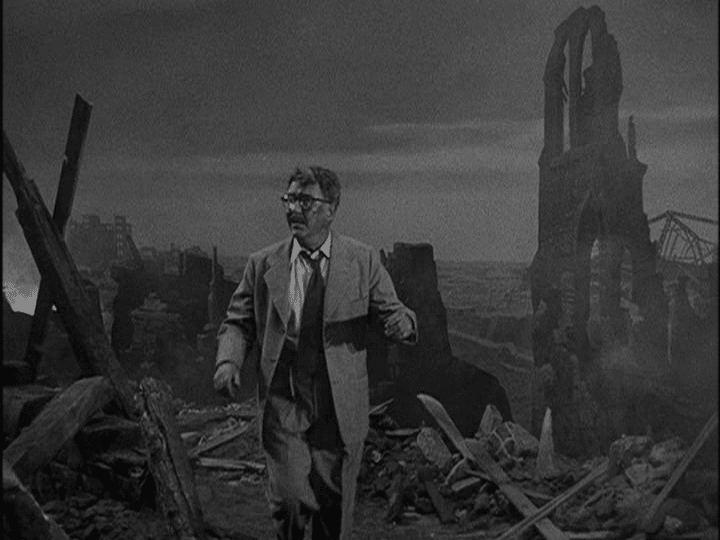
While there is plenty of food to keep him alive for years, contemplating the lonely emptiness of his bleak future drives Henry to the brink of suicide. He finds a gun, raises it to his head, and is about to end it all when…Aha! He spies salvation! Amidst the rubble of the public library, he finds piles of books left intact. He is overjoyed at their discovery, and the knowledge that there is “time enough at last!” to read them to his heart’s content.

But as Bemis reaches down to grab a book, his reading glasses slip off and their thick, coke-bottle lenses shatter as they hit the ground. He mournfully fingers the now useless frames, knowing he won’t be able to read a word without them. “That’s not fair,” he sobs amongst the books that will remain forever closed to him. “That’s not fair at all. There was time now. There was all the time I needed…! That’s not fair!”
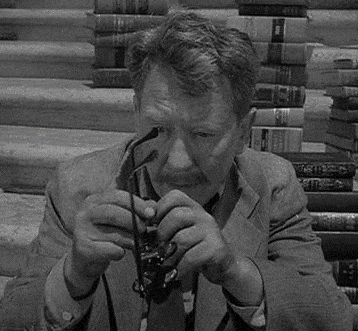
As the episode comes to an end, the narrator intones:
“The best laid plans of mice and men…and Henry Bemis…the small man in the glasses who wanted nothing but time. Henry Bemis, now just a part of a smashed landscape, just a piece of the rubble, just a fragment of what man has deeded to himself. Mr. Henry Bemis…in the Twilight Zone.”
Poor Mr. Bemis. All he needed was an extra pair of eyeglasses. All he needed was a little redundancy in his life.
Two Is One and One is None: How Redundancies Increase Your Antifragility
The word “redundant” typically has a negative association in our culture. It means something that is needlessly repeated, and thus superfluous.
But in engineering, redundancies are often intentionally built into a system. By duplicating critical components, if one piece fails, the other can act as a back-up and keep the machine functioning. Think of the lives saved because airplanes have redundant everything – spark plugs, fuel pumps, even engines (aircraft can often easily fly with just one working engine).
These kinds of redundancies are also built into the human body. As philosopher Nassim Taleb observes, “We humans have two kidneys…extra spare parts, and extra capacity in many, many things (say, lungs, neural system, arterial apparatus)… Layers of redundancy are the central risk management property of natural systems.”
Taleb argues that redundancies aren’t just useful in human and technological machines, but in many others aspects of our lives as well. In fact, intentionally cultivating some redundancy can make us more antifragile. As we discussed in our post on this concept last year, antifragility is a quality that goes beyond mere resilience. Resilient people meet a challenge and bounce back to where they were before. Someone who is antifragile, on the other hand, is able to use setbacks as a springboard to even greater strength – like a phoenix rising from the flames. When things, and people, are falling apart, the antifragile are able not just to survive, but thrive. They’re positioned to actually “gain from disorder.”
How redundancies increase our antifragility is obvious: if you only have one of something, and it fails, you can be up the creek without a paddle. Members of the military have a maxim that neatly sums up Taleb’s philosophy: “Two is one and one is none.” If you bring one piece of gear on a mission, it’s bound to break, and when it does, you’ll find yourself in a real pinch. Far better to have not only a Plan A and a Plan B, but a Plan A, B, and C. Former Navy SEAL Richard J. Machowicz calls the intentional creation of strategic redundancies “advantage stacking” – “you want to stack so many of the advantages in your favor that, when the order comes, when the opportunity presents itself, you can’t help but win.”
“Two is one and one is none” may sound fatalistic, but it’s also realistic; Murphy’s Law is far too often in effect. Or as Taleb puts it, “Redundancy is ambiguous because it seems like a waste if nothing unusual happens. Except that something unusual happens—usually.”
Redundancies Foster Action
While we often think of redundancies as conservative and preventive – akin to a security blanket – they can actually position you to be proactive. If you’re on a military mission, and know you have back-ups of your key pieces of equipment, you’re going to have more courage and confidence and less anxiety. If you’re a business owner, and you have a big slush fund of extra cash, you can make bolder decisions. Taleb elaborates:
“Redundancy isn’t necessarily wussy; it can be extremely aggressive. For instance, if you have extra inventory of, say, fertilizers in the warehouse, just to be safe, and there happens to be a shortage because of disruptions in China, you can sell the excess inventory at a huge premium. Or if you have extra oil reserves, you may sell them at a large profit during a squeeze.
We saw that redundancy is opportunistic, so such extra strength can be used to some benefit even in the absence of the hazard. Tell the next MBA analyst or business school professor you run into that redundancy is not defensive; it is more like investment than insurance. And tell them that what they call ‘inefficient’ is often very efficient.”
Redundancies aren’t just about fortification or entrenchment — they can be a key stimulus in spurring what life is all about – taking action.
Examples of Redundancies That Can Strengthen Your Antifragility
Beneficial redundancies come in a wide variety of forms. The most ready example is that of tangible gear, especially supplies for emergency situations. But they can also take the form of skills, mental preparation, and relationships, and be equally useful in your everyday life.
Here are just a few examples of how redundancies — both big and small — can help you thrive when your best-laid plans go awry:
72-hour survival kit. If a natural or man-made disaster cut off your water and electricity, would you be prepared to weather the storm? While survival experts recommend having several months to a year of emergency food, water, and supplies on hand, a simple 72-hour kit is easy to assemble and store, and will see you through most emergencies.
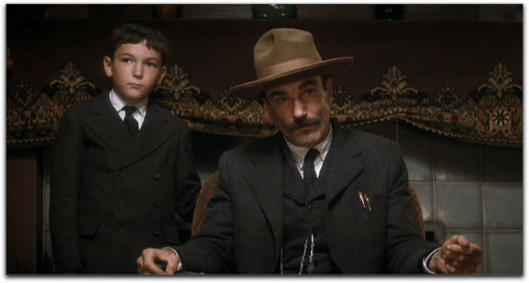
Extra pen/pencil during important meetings and exams. You’re at an important meeting with a client, pull out a notepad, and are about to get things underway when you realize your pen is out of ink. Asking the client if you can borrow one makes you look unprepared, and you haven’t even gotten going yet!
Alternative form of transportation. Kate and I share a car. The other day she had it, and I needed to get to the store right before it closed. I could have made it on bike had I owned one, and I cursed not having a 2-wheeled conveyance. A bicycle or motorcycle (or even a horse, a la Rick in The Walking Dead) would come in handy during the apocalypse too; when car loads of people trying to get the hell out of dodge clog the streets, you can slip through the deadlock.
Side hustle/valuable hobby. Very few jobs offer much security these days. You could be given the boot without warning, and then what? If you’ve been cultivating a side hustle all along, you’ll already have a back-up income source in place, and you can either live on that until you find another full-time job, or try to expand it into a full-fledged business. If you don’t have a side biz outside your 9-5, consider developing a potentially valuable hobby. Maybe you do woodworking as a pastime right now – if your corporate gig falls through, you might be able to pivot into making furniture full-time.

A library of physical books. There has never been so much information at our fingertips…and it has never been so fragile! Henry Bemis couldn’t read the world’s remaining books because his glasses broke; we might not have the privilege of having physical books on hand, period! If your whole library is stored on various devices, and that technology fails, or even simply changes, you won’t be able to access it. That’s part of the reason I buy a physical copy of all my favorite books. I’ll never curse the fact that I need some unavailable widget to start reading them – I can simply open the cover and dive in.
 Memorized knowledge and skills. If physical books are a back-up to digital copies, memorized knowledge is a back-up to your books. Having something like a survival Kindle to fill in the gaps is a great idea, but strive to memorize as much practical and life-saving information as you can. Do you know how many cups are in a gallon without googling it? (The answer is 16.) To download handy info into your brain, practice your emergency skills on a regular basis and always have a copy of the classic Pocket Ref to thumb through while on the john.
Memorized knowledge and skills. If physical books are a back-up to digital copies, memorized knowledge is a back-up to your books. Having something like a survival Kindle to fill in the gaps is a great idea, but strive to memorize as much practical and life-saving information as you can. Do you know how many cups are in a gallon without googling it? (The answer is 16.) To download handy info into your brain, practice your emergency skills on a regular basis and always have a copy of the classic Pocket Ref to thumb through while on the john.

Written notes. It’s great to memorize the ideas of others, but what should we do when we come up with one of our own? We often think of to-dos and great ideas, and then rely on our memory to capture and preserve them. Later we bemoan our inability to retrieve the thought we were sure we wouldn’t forget. Buttress the fragility of your ideas by writing them down in a pocket notebook.
Multiple prepared answers to multiple questions and objections that could be raised during a business interview or pitch. Before you interview for a job you should have already prepared in your mind answers to as many questions as possible, as well as multiple questions to ask the interviewer in turn (in case some of the questions you planned on asking are answered during the course of the interview). Similarly, before you make a business pitch, you should know exactly how you’ll answer a variety of objections, and not only that, what you’ll then say if those answers don’t initially satisfy them.

Emergency fund. Kids end up in the emergency room; your car goes kaput in the middle of New Mexico; you unexpectedly get laid off from your job. We’ve all experienced these setbacks and their accompanying bills. Many people don’t plan for emergencies in their monthly budget, so when the poop hits the fan, they’re forced to take on expensive credit card debt. An emergency fund is insurance for you and your family – an antifragility must for every man.
Alternative form of currency. If the poop really did hit the fan, our regular currency would become worthless. That’s why it can be a good idea to have an alternative form on hand — some gold perhaps, or that universal medium of exchange, cartons of cigarettes.
Earning a double major in college. It often doesn’t take a tremendous amount of extra effort and time to earn two majors in college instead of one. Not only does it allow you to pursue two different interests, but, if you can’t find a job related to the first major after you graduate, you have the option to pivot towards something related to the second.

Analog watch. Many men have given up on wearing watches, as they use their smartphone to check the time. But a phone battery can die, torpedoing your punctuality. Plus, an analog watch can double as a compass, should you become lost in the woods.
Back-up to your hard-drive. No one knows when their computer will go completely kaput – or be stolen. When it does, sometimes your files cannot be recovered. You can lose your life’s work, not to mention all your photos and music. Everyone should use a device that backs up their computer’s hard drive without their even having to think about it.
Mental advantages. Machowicz (the former SEAL) argues that in preparing for any mission, whether in military or civilian life, you need to stack not only your advantages in things like skills and equipment, but also in the intangibles like optimizing one’s attitude, timing, and desire, as well as doing exercises like visualizing your plan beforehand. The more mental advantages you cultivate for yourself going into something, the better your chances of coming out the victor.

A large network of acquaintances and core group of good friends. Machowicz also mentions another crucial advantage to success: alliances. Having a solid network of relationships can help us thrive professionally, especially during rocky times when our business craters or we find ourselves out of work. And when it comes to your personal friendships, you can never have too many “redundancies.” It’s great to have one best friend you’re incredibly close to, but what will you do if/when he moves away? Some men don’t even have that – they try to go through life entirely on their own. When hard times come, these isolated loners crumple without needed support.
A significant other can be a great asset in our lives, but isn’t enough either: we all know the guy who ignores his friends when he’s fallen for some girl; then when they break up, he’s sorely missing his old buddies. Having an intense romantic relationship is no replacement for a group of loyal friends. Remember, two is one and one is none.
Balancing Minimalism and Antifragile Redundancies
Some redundancies don’t take up any room at all – you can cram a nearly infinite amount of knowledge into your cranium, and there’s nothing more antifragile than true community.
But some redundancies are tangible goods – things you have to buy, store, and potentially take care of. Thus there can be some tension for a man who wants to create some redundancies in his life but who also wants to embrace the philosophy of minimalism.
As we discussed last week, there are some potential problems with a very strict minimalist lifestyle, and to those issues, I’d like to raise another: it makes you very fragile. If you only have one of everything and that thing breaks, you can find yourself in a real pickle. Money can often be a hedge against this; if you have an ample bank account, you can simply buy a replacement. But in an emergency, one’s money might become worthless, leaving the strict minimalist without much in the way of resources. (There’s a reason many folks who lived through the Great Depression became pack rats later in life.)
On the other hand, avid consumers are quite fragile too. If someone is a hoarder, their heaps of possessions will prevent their mobility and efficiency in action; if you’ve got a first aid kit somewhere, but it’s buried under boxes and boxes of stuff, it’s of little use. Even if someone is not a hoarder of TLC proportions, their undisciplined spending habits can lead to debt, and debt is highly fragile.
Thankfully there is a way to navigate between these extremes, and it is possible to be a moderate minimalist who is passionate about both living simply and being antifragile. The key is to choose one’s redundancies carefully and strategically.
A perfect example of the feasibility of this path is my friend Jeff More, who writes over at ITS Tactical. Jeff is an avid outdoorsman who loves to hike, climb, camp, and recreationally shoot. He’s also into self-sufficiency and emergency preparedness. All of these pursuits require a fair amount of equipment and supplies, and yet Jeff lives in a 180-square foot apartment in Los Angeles. How does he balance his “small” life and gear-heavy interests?
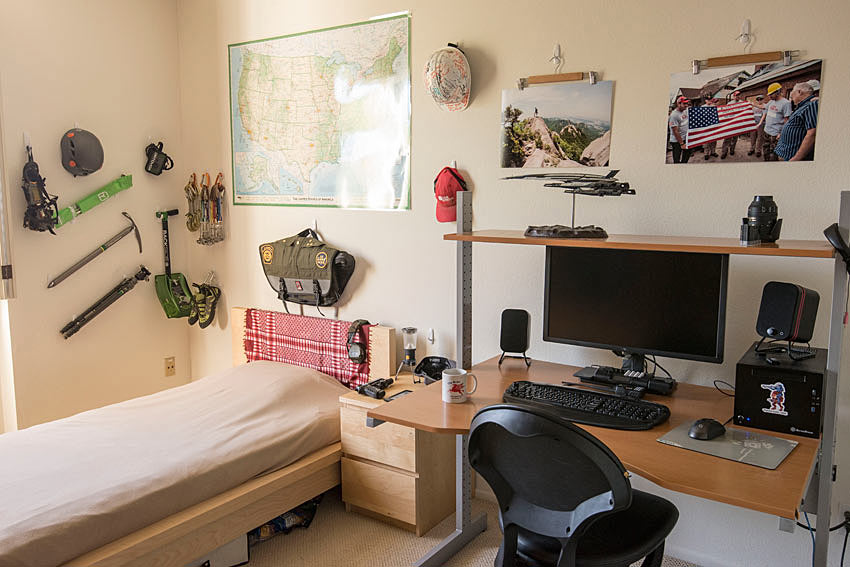
In a great article on ITS, Jeff shares his methods. First, when it comes to his outdoors gear, he treats his camping trips as experiments in whether something should stay or go, and whether upgrades are justified:

“My checklist spreadsheet has columns for Date Last Packed/Inspected, Category (based on the Ten Essentials for easy sorting), Item, Description, Weight and if something was Unused on my last trip.
If there’s something on the list that gets broken, lost or I simply want a newer, lighter and shinier version of it, I make a note in the spreadsheet and add it to my Amazon Wishlist. I wait around until the 15th of every month (when the paycheck that’s not used for rent comes in) before pulling the trigger. More often than not, after a week or three of sitting in my wishlist, I cool off a bit and decide I don’t really ‘need’ it after all. My gear purchases have decreased somewhat since I’ve implemented this system.
The last column is an indicator that something is habitually unused and should be purged in the next round of decluttering.”
Jeff also created a great back-of-the-napkin flowchart that helps him make decisions about keeping or purging the other things he owns:
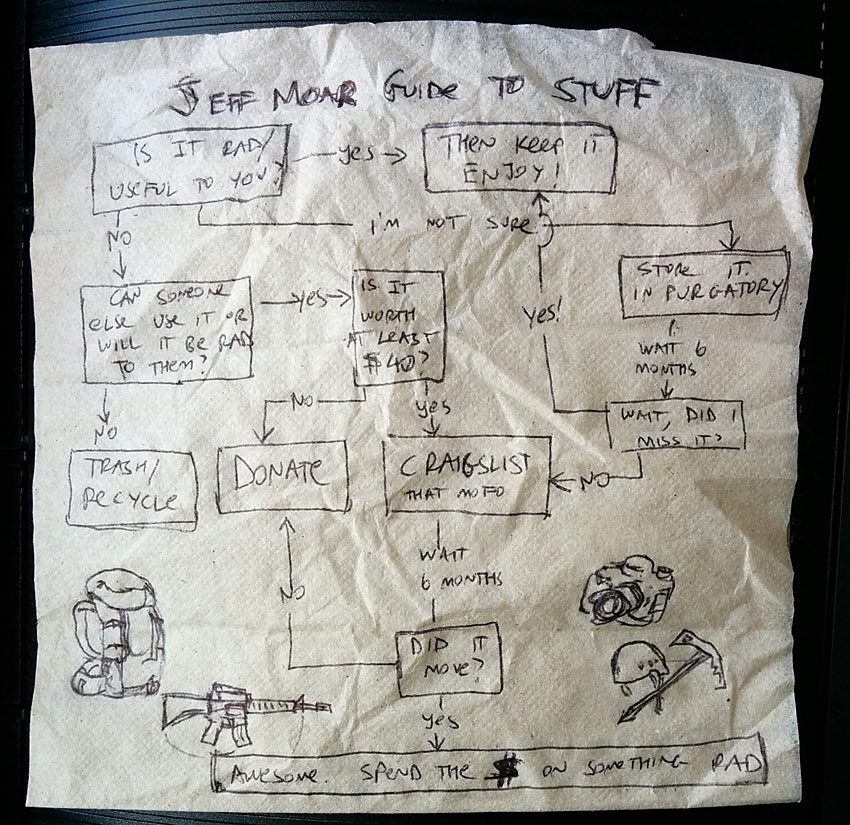
When it comes to balancing the desire to be a minimalist and to be prepared, Jeff recommends letting your camping backpack double as a bug-out bag, and stocking up “horizontally” instead of “vertically.” That is, instead of spending your money on superfluous duplicates of gear you already have, invest in “consumables” like emergency water, batteries, dehydrated food, ammo, and first aid supplies. An ample supply of such things prepares you for a grid-down scenario, but you can also use and cycle through these things while camping and in your everyday life if such a disaster never arrives.
Cultivate Your Redundancies Wisely and Strategically
I think we can all agree that nobody needs two (or even one) promotional bobbleheads or DVDs of Gigli. And many will probably agree that a man does need more than one flashlight and knife. But exactly where you draw the line between minimalism and strategic redundancies will differ from person to person and their unique circumstances, including the size of their bank account, the size of their living quarters, their environment, and their personal convictions. What’s “useful and rad” to one guy is unnecessary to another, and there’s no one-size-fits-all guideline. As you decide which redundancies to create/keep, and which to forgo, weigh your decisions thoughtfully, by asking questions such as:
- What is the cost to purchase?
- What is the opportunity cost of owning/keeping this item? By storing one thing, you won’t have room for another.
- What is the opportunity cost of caring for this item, or investing in this pursuit? By spending your time on one thing, you’ll have less time for others.
- Will this item hinder or help me in feeling confident and taking action?
- Could buying this item turn out to be an investment in some way?
- What is the potential cost of needing it and not having it, versus having it and not needing it?
- Will buying/keeping this item, or investing my time in X pursuit, make me more or less antifragile?
There are many redundancies which require very little investment in either time, money, or storage space, and yet have the potential to create a huge ROI in your life. Some are even free; if you’re strapped for resources on every front, start with those.
Conclusion: Be a Bull Moose, Not a Bemis
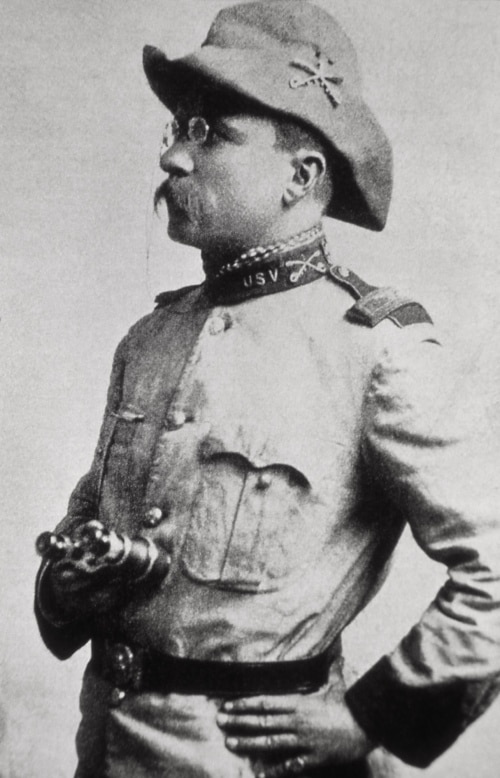
Strategic redundancies are not for the weak and fearful, but rather for those who wish to thrive, and not just survive, when faced with challenges that range from survival scenarios to financial setbacks. When cultivated with moderation and mindfulness, they ensure a man will be able to take action in times of chaos and disorder and come out the victor.
Theodore Roosevelt understood this. Because he couldn’t see very well at all without his glasses, he carried with him 12(!) extra steel-rimmed pairs when he deployed to the Spanish-American War. He stashed these back-up glasses in various places on his person and in his equipment, so that no single accident would destroy them all. A few he put in his saddlebags, and several were sewn into his shirt, belt, pants, and even the lining of his hat.
Overkill? Perhaps. But TR did not want to miss out on the chance to finally fulfill his life’s goal of testing his mettle in battle. He had “time enough” and the right tools, so that as he charged up San Juan Hill, it was with a clear vision of the fight before him.




